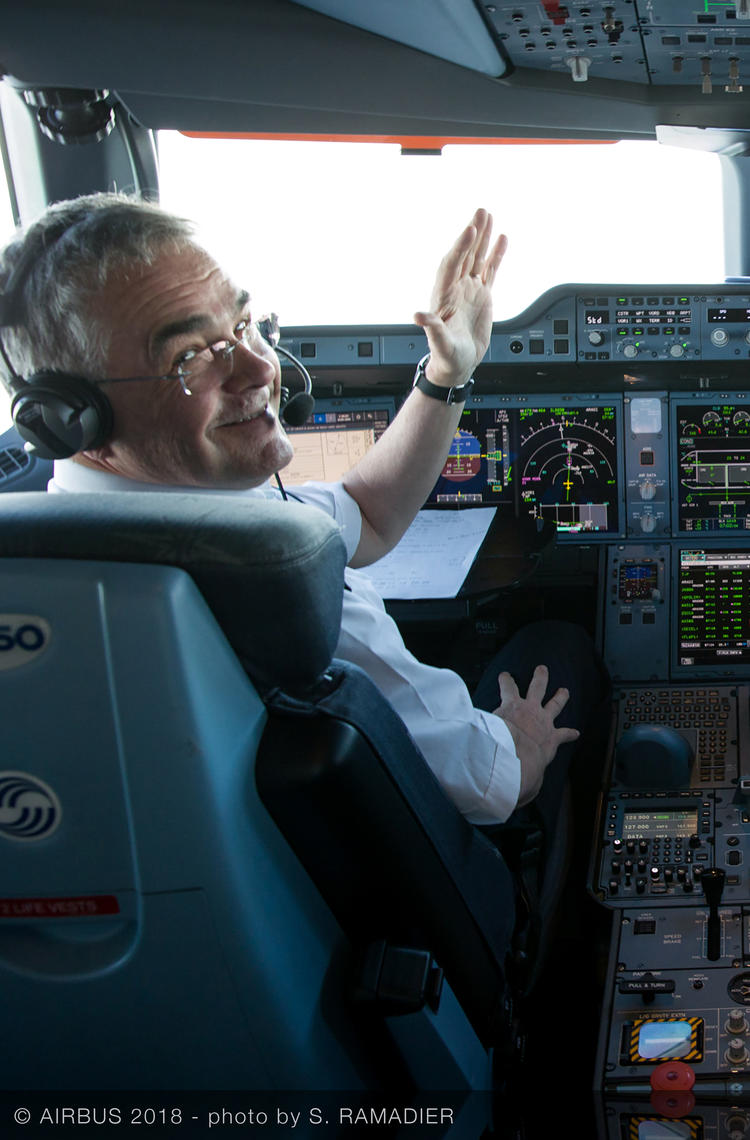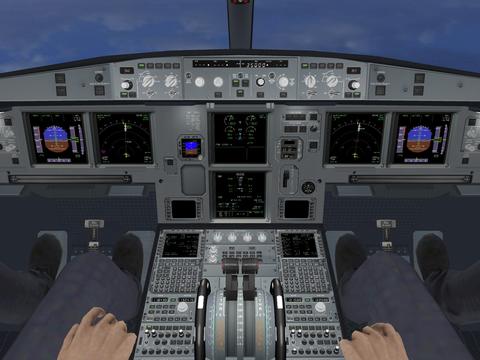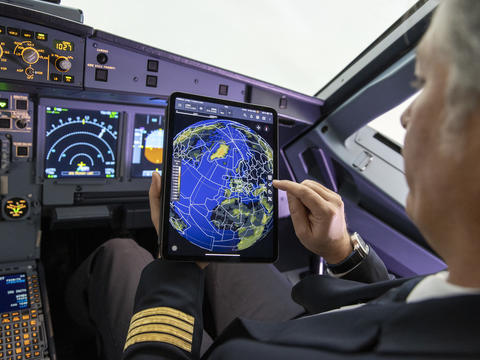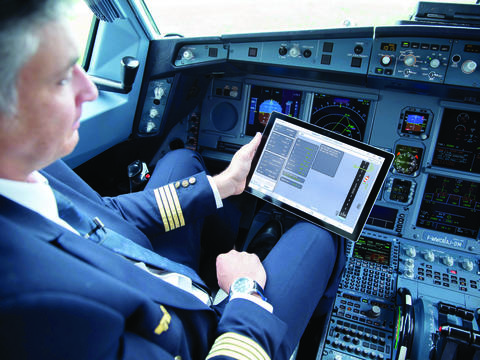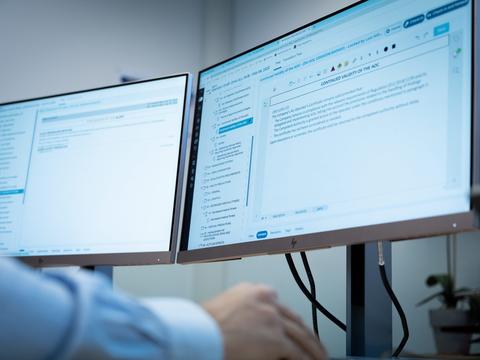The best office in the sky
From two-pilot Forward-Facing Crew Cockpits to sidesticks and digital fly-by-wire, Airbus has always been a pioneer in cockpit technology. The A350 cockpit builds on 50 years of non-stop innovation to provide improved display visibility and flexibility as well as new systems to enhance pilot awareness and reduce workload.
Reason #1 - Designed by pilots for pilots
Right from its conception, expert Airbus pilots took part in the design of the A350 cockpit. Moreover, during the development phase of the A350, not only Airbus experts but also airline pilots fine-tuned the design, resulting in the most technologically advanced cockpit in the market.
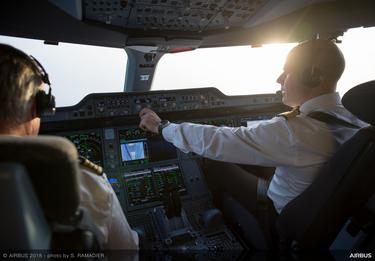
The A350 comes with larger and better positioned screens, providing enhanced visibility of information across the cockpit and extended interactivity for the Flight Crew.
The cockpit layout, using six identical large screens, makes the task of sharing operational information between pilots much easier, while privileging information that corresponds to the given situation. Overall, the design aims at reducing overall pilot workload and increasing situational awareness.
Furthermore, Airbus cockpits have always been designed with the pilot's physical comfort and practicality in mind. So you won’t be surprised that the large A350 cockpit provides pilots with a retractable tray table, reclining seat backrest with lumbar adjustment, adjustable armrest and headrest and the best Head Up Display head clearance on a commercial aircraft.
As with other Airbus aircraft, the A350 applies the Airbus Fly-by-wire Family concept, maximising commonality across the fleet and reducing Flight Crew training time.
Reason # 2 - Six large touchscreen displays
The A350’s unique cockpit design centres around a new six identical large Liquid Crystal Displays layout with the lateral screens angled inwards, allowing excellent cross-cockpit visibility and optimum flexibility for displaying information.
Interactivity is further improved with the introduction oftouchscreens. The technology enhances flexibility and improves interaction between pilots.
This configuration of six identical large displays covering EFB and avionics is unique to the A350. The six screens share the same part number with fully interchangeable software and hardware. This results in significantly lower – up to 80% – spares and maintenance costs, as well as higher dispatch reliability as the aircraft can be dispatched with two displays malfunctioning.
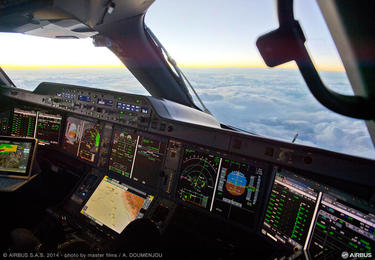
Reason #3 - Enhanced to reduce workload and raise awareness
For each of the main pilot tasks (flying the aircraft - navigating & communicating - managing the aircraft systems - managing the mission) the A350 introduces innovative solutions to better support pilots by raising awareness and reducing workload.
Fly the aircraft with new generation Head Up Display and PFD
The A350 offers a new generation dual Head Up Display which provides pilots with enhanced situational awareness, projecting aircraft trajectory information on the external world, easing transition from IMC (Instrument meteorological conditions) to VMC (visual meteorological conditions) conditions. In addition, the new trajectory and energy symbologies are fully consistent between HUD and PFD (Primary Flight Display).
Navigate with improved Flight Management System (FMS)
Improvements and functions to anticipate certain failure scenarios are now included, significantly reducing the pilots’ workload. The pilot can play a virtual scenario such as single-engine failure or depressurization using the ‘What if’ function, to assess the capability of the aircraft following a degradation at any point along the route. The ability to fly precise trajectories through difficult terrain or for noise abatement reasons has also considerably improved with the introduction of RNP-AR capability.
Manage Systems with improved Electronic Centralised Aircraft Monitoring (ECAM)
The A350 ECAM interface has been revisited with improved access to information. A dispatch function has been implemented to ease the crew’s workload during pre-flight dispatch. Also, normal checklists are fully integrated in the Multi Functional Display (MFD) with a dedicated interactive page and direct access through the Keyboard Cursor Control Unit (KCCU, the pilot’s “mouse”). These checklists are airline customizable. Isolation of abnormal situations improves readability and eases corrective procedures. The system pages are now displayed directly under the engine section, making the page easier to understand for all engine dependent systems like fuel, hydraulic, electrical systems.
Manage Mission with integrated and intuitive Electronic Flight Bag (EFB)
The EFB is an airline device (laptop or tablet) providing the Flight Crew with reference material such as navigational charts or operating manuals previously found in pilots' carry-on flight bags. On the A350, the EFB is integrated with the Onboard Information Systems (OIS) display. It helps the Flight Crew manage tasks more easily and efficiently with less paper. The OIS is also integrated with the KCCU. Furthermore, it benefits from the ‘OIS on centre’ function to improve crew coordination during briefings. Interactivity is further improved with the introduction of touchscreens allowing smoother interaction to manipulate charts.
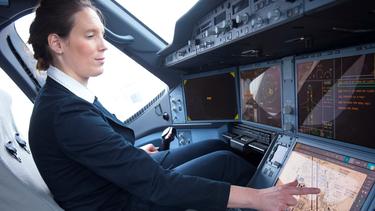
Reason #4 - New and improved systems for safety enhancement
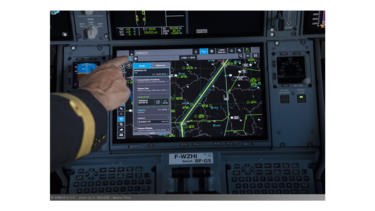
Brake to Vacate and Runway Overrun Warning & Protection (BTV/ROW/ROP)
These systems, first introduced on the A380 and unique to Airbus, are further improved on the A350 with the introduction of runway contamination levels. Furthermore, a specific interface allows the crew to quickly check that the aircraft is capable of landing on the runway available based on selected hypotheses.
Automatic Emergency Descent (AED)
The aim of AED is to facilitate the Emergency Descent procedure by reducing pilot workload while keeping the crew “in the loop”. One potential cause for an Emergency Descent is depressurisation. In the absence of flight crew reaction to cautionary alerts of depressurisation, AED automatically brings the aircraft down to a safe altitude. AED is thus a “last safety net” for the extreme situation of an unconscious flight crew. This is the first time this functionality has been implemented on a commercial aircraft.
On-board Airport Navigation System (OANS)
Once the pilots turn onto the taxiway, the OANS displays a map of the airport apron, its runways and all the taxiways, showing the aircraft’s exact location in real time.
Reason #5 - Unique Airbus commonality
When designing a cockpit, commonality with the Airbus family is always an important consideration.
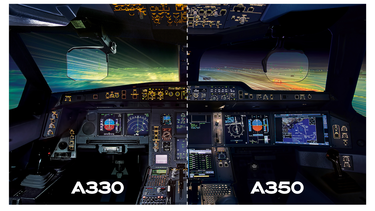
Cross Crew Qualification (CCQ)
Cross Crew Qualification to the A350 is available for A320 Family, A340 and A380 pilots with a training duration reduced by up to 78%.
Mixed Fleet Flying (MFF)
Commonality means less time spent training but it also facilitates Mixed Fleet Flying. MFF enhances flight crew proficiency and increases productivity through greater rostering flexibility. It also offers a more varied working environment, hence contributing to greater job satisfaction for pilots.
Common Type Rating (CTR) and Single/Mixed Fleet Flying (SFF) with the A330
A330ceo/neo pilots qualify on the A350 without mandatory Full Flight Simulator time and with a training time reduction of around 60% compared to a full type rating course. They are then able to fly both aircraft in a Single/Mixed Fleet Flying configuration.
Conclusion
Designed around its six large displays, the A350 cockpit’s clean lines and uncluttered layout offer pilots an exceptional work environment with greater flexibility, reduced workload and improved situational awareness. Familiar Airbus design philosophies are maintained throughout, giving the cockpit a typical Airbus family feel and making the Airbus pilot feel quickly at home.
